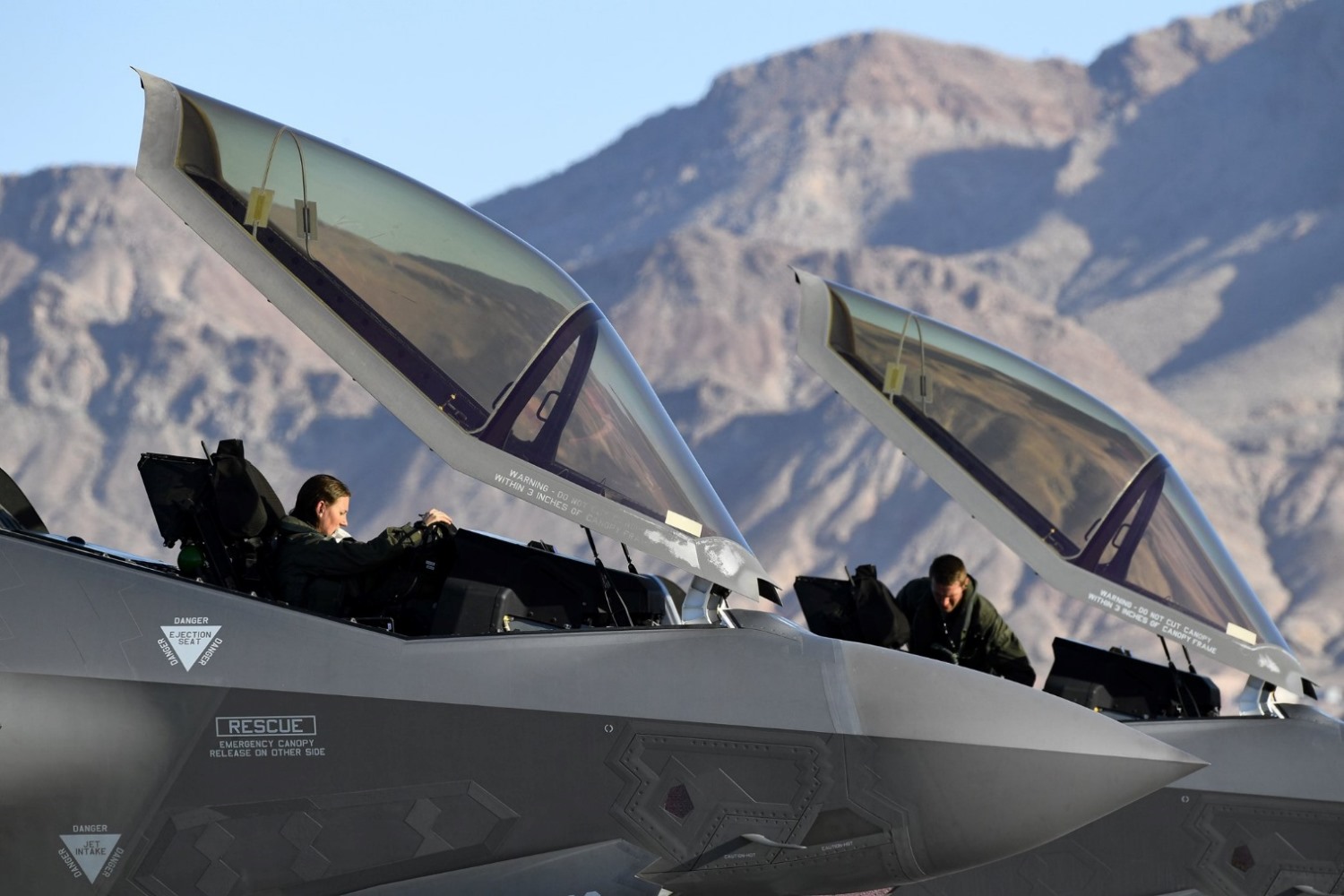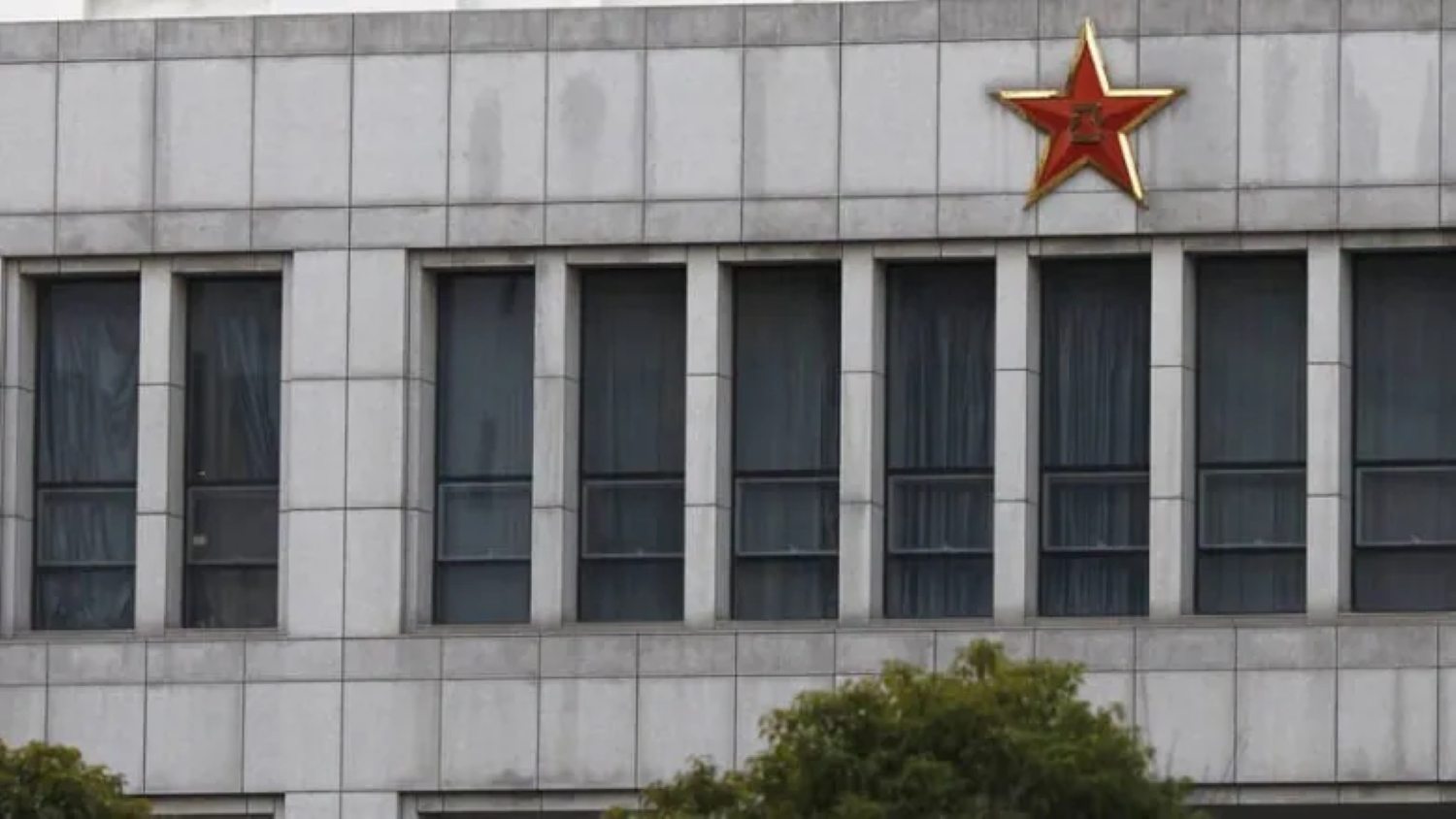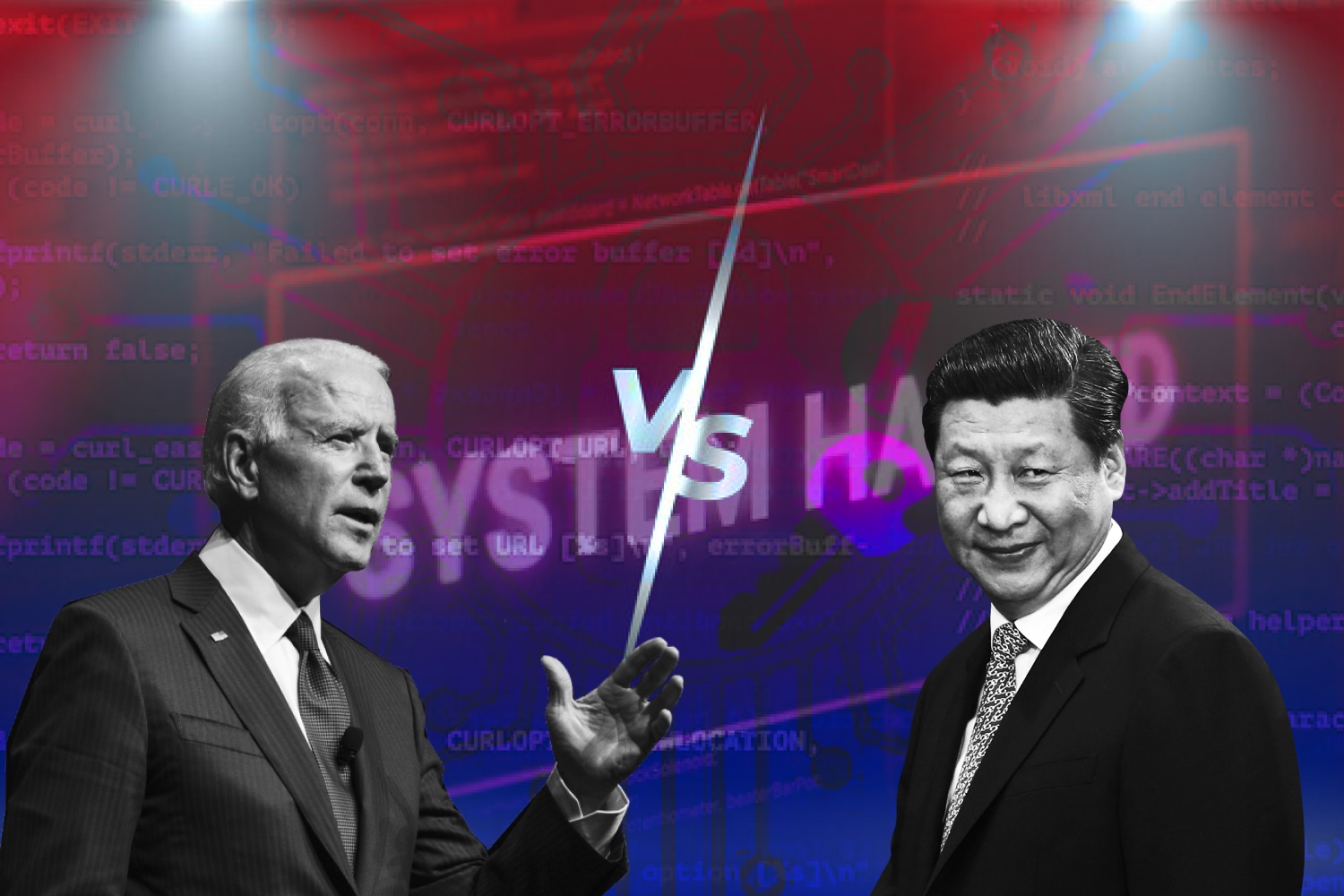Yearslong Sneaking in – China Rips off US Most Advanced Technology
The best way to catch up is working your ass off and hope to fit in the situation, the best way to catch up is spending million hours in researching and upgrading your own knowledge and profession, or product if you are an entrepreneur, but these tasks are daunting and time-consuming to some people, so they have to crack to code.
The best way to catch up, perhaps, is to stick with the mentality “fake it until you make it”. However, when you can’t find the resources that help you grow because of the protecting layer, the best way is to sneak in and steal them. American among those other allies stuffed hard from being allegedly ripped off from civic to military secrets, and the theft is now showing up to the screen.
One aspect that could help a nation gain an upper hand in the game is to constantly boosting the military technology. That’s why China has been trying so hard to sneak in and steal the most confidential information of those advanced weapons in the US.
China Suspicious Yearslong Sneaking in the US Core
The military tech involved in all this is so hush-hush that it’s pretty rare to get the lowdown on who’s actually in the game. But there are some teas on one particular tale that breaks down how and why the Chinese government is snagging US tech.
So, we’ve got Su Bin, also known as Steven to his English-speaking friends. This man managed to weave his way into the aerospace scene, making everyone think he’s just your typical keen-as-mustard businessman.
Little did they know, Su was pulling strings on the down-low, orchestrating the swipe of more than half a million top-secret files from some of the biggest defense companies on the planet. And what was he after? The juicy deets on the Boeing C-17 transport aircraft. Talk about playing it sly.
While the C-17 was manufactured by Boeing, the company relied on numerous smaller contractors, providing Sue with ample opportunities for infiltration. After identifying potential targets, he would pass their details to two Chinese military hackers he collaborated with.
Sue and his partners maintained access to Boeing’s network for three years, stealing over 600,000 files related to the C-17, along with thousands of files on the F-22 and F-35, top fighter planes.
After 3 years playing with fire, Sue was arrested in Canada, extradited to the United States, and sentenced to four years in prison in 2016 by a court in Los Angeles. Nonetheless, their mission had already achieved success.

In November 2014, the People’s Liberation Army unveiled the Y-20 cargo plane, bearing a striking resemblance to the Boeing C-17, even with a C-17 parked nearby at the air show. It appeared that the PLA had managed to come up with a solution of their own. However, this wasn’t even the first instance of such cyber-espionage.
Going as far back as 2007, Chinese hackers infiltrated Lockheed Martin’s networks and absconded with terabytes of data covering everything from the F-35’s radar systems to its engine schematics.
In 2009, The Wall Street Journal reported another cyber-attack, this time targeting the F-35’s electronic systems. Chinese hackers seemed to be exceedingly successful, going as far as covertly monitoring what were meant to be secure online press conferences before being discovered.
Two years later, in late 2016, a small Australian aerospace company that subcontracts with the Department of Defense fell victim to hacking. Documents concerning the F-35, C-130 transport aircraft, and Australian naval vessels were stolen.
Then there comes the Chinese-made J-20 stealth fighter. It’s equipped with long-range missiles and, interestingly, bears a striking resemblance to the F-35 and F-22 warplanes made in the United States. The fact that Chinese government hackers invested significant energy and effort into stealing information about the F-35 is somewhat unusual, considering that the F-35 has been one of the most widely criticized warplanes ever. Despite all of the controversies, the F-35 is still considered one of the world’s best fighter planes. Stealing the technology allowed the Chinese government to take a significant step forward in their grand geopolitical strategy.

Recently in 2022, Yanjun Xu, a Chinese Ministry of State Security officer, was sentenced to 20 years in prison in the United States for multiple charges related to corporate espionage and attempted theft of trade secrets.
Xu targeted foreign and US aviation companies to steal information, including military data and trade secrets. He organized trips for GE Aviation employees to China to gather detailed information on designs and system specifications.
Xu tried to steal an exclusive composite aircraft engine fan module and recruited insiders at a French aircraft engine manufacturer to plant malware. Another Chinese spy, Ji Chaoqun, was convicted of working with Xu and the Chinese Ministry of State Security in Chicago.
When doing espionage, the shocking thing is the hackers didn’t need to exert much effort. It’s not a boast to say Chinese has taken the seat of the most advanced hacker. It’s not good for American though. But this leads us to the important opportunity to dive in the factors that make their effort successful.
China’s Espionage Activities – Nightmares to America
In the past twenty years, China has constructed a massive cyber espionage network, with a key hub being a nondescript 12-story building located at 208 Datong Road near Shanghai airport.
At first glance, it might have seemed like your run-of-the-mill office building, complete with amenities like a medical clinic and a kindergarten. However, behind this seemingly ordinary façade, it housed the headquarters of a covert People’s Liberation Army (PLA) cyber warfare unit – Unit 61398.
Interestingly, you won’t find much about Unit 61398 in Chinese government records; it’s more likely to pop up in documents from the US government. This secretive unit played a significant role in China’s cyber activities, operating from a seemingly mundane building while remaining largely off the official Chinese bureaucratic radar.
A secret State Department cable written in 2008 mentioned an attack by a Chinese hacking group codenamed Byzantine Candor, which stole more than 50 megabytes of emails and a list of account details from a US government agency.
The public was completely unaware of the existence of Unit 61398 until an American cybersecurity company released a report that, among other things, identified the unit as the one behind the theft of the F-35 designs.

For seven years, Mandiant secretly monitored the activities of Unit 61398 hackers. During that time, the group was responsible for at least 141 attacks, which cumulatively stole hundreds of terabytes of data.
Mandiant watched from the shadows as Unit 61398 hackers stole blueprints, manufacturing processes, clinical trial results, pricing documents, negotiation strategies, and other proprietary information from more than a hundred of its clients, mostly in the US. More than 20 industries, from defense contractors to chemical plants, mining companies, and telecommunications corporations, were targeted.
Mandiant also learned through analyzing their techniques and tracing their IP addresses that Unit 61398 hackers were working out of the same building, that nondescript 12-story office on Datong Road. It’s kind of ironic that by uncovering Unit 61398, Mandiant showed exactly the kind of ingenuity and talent that made so many American companies prime targets for Chinese espionage operations.
The report made headlines across the world and alerted everyone to the threat posed by systematic, state-sponsored Chinese espionage. In May of 2014, the Department of Justice indicted five members of Unit 61398.
The OPM hack, resulted in the theft of 22 million security clearance files on American officials, military personnel, contractors, and intelligence officers. Intelligence agencies quickly realized what it meant – the Chinese government was assembling a massive database of almost everyone in the American national security community.
The fallout from the OPM hack was huge. The CIA couldn’t move some of their officers to China because they were concerned their covers were blown. The Obama Administration offered millions of Americans credit protection in case the hackers had their credit card numbers.
The arrest of the Unit 61398 hackers and the OPM hack made Chinese espionage the biggest issue in the US-China relationship, and it led directly to what looked like an incredible breakthrough.
The US-China cyber agreement appeared to be an arms control deal for cyberspace and initially led to a reported 80% reduction in successful attacks by Chinese hacking groups. However, it didn’t deter the Chinese government from continuing its espionage activities.
The exposure of Unit 61398 and reorganization of the People’s Liberation Army under Xi Jinping’s leadership shifted the power to the Ministry of State Security, which combined elements of the FBI, CIA, and NSA.

While cyber espionage attacks seemed to decline on paper, most of this reduction had occurred before the agreement was signed. China redirected its hacking efforts to regions like Russia and Southeast Asia, and it likely took time for the Chinese government to identify new high-value cyber espionage targets within the United States.
Xi Jinping probably never intended to halt Chinese espionage operations but sought diplomatic advantages while enhancing the government’s cyber capabilities. Donald Trump’s trade war with China failed to prevent espionage because it couldn’t dissuade Xi from his chosen strategy.
Hatch a Conspiracy – China Seeks to Topple American Status
First off, it’s crucial to recognize that espionage is a universal practice, deemed essential for safeguarding national security by every country. The understanding that nations are constantly involved in spying on each other has become a routine aspect of global geopolitics.
Now, when it comes to China’s espionage, there are three distinct aspects that set it apart.
First, the purpose, Su Bin explained this well in one of the emails used as evidence against him. The F-22 and F-35 documents he helped steal would, in his words, “allow China to catch up rapidly with US levels and stand easily on the giants’ shoulders.”
Now, here’s the scoop: Xi Jinping’s Communist Party in China is dead-set on outshining the U.S., both militarily and economically. And guess what? These two power plays go hand in hand. Having a top-notch military not only flexes muscles in the Indo-Pacific but also gives them serious bargaining chips in trade deals.
But, and it’s a big but, China’s leaders aren’t going the usual route of pumping cash into research and development. Nope. Their playbook involves a quicker move – swiping tech from the U.S. It’s like they’ve decided to turbocharge their rise to the top.
Take, for instance, the J-20 – that bird that went head-to-head with American F-35s over the South China Sea is a prime example. It’s only the third fifth-gen fighter globally, trailing behind the F-35 and F-22, and guess what? Its blueprint is essentially a mashup of the two American planes.
Now, why does the J-20 exist? Picture this: the South China Sea, one of the hottest spots on the planet in terms of geopolitical tension. Xi Jinping sees the J-20 as the ace up China’s sleeve, designed to rule the skies in this contested region. It’s not just a plane; it’s a power move for China in projecting military might.
And here’s the kicker – if things heat up, like a Taiwan showdown, the J-20 becomes a key player. It’s how China plans to keep US naval vessels and aircraft at bay. As China’s global influence spreads, so does its military reach. It’s like they’re leveling up in the big leagues.
Beijing’s ultimate goal is to surpass the United States, and while China’s leaders would prefer to achieve this peacefully, in the event of a war, they aim to level the playing field.
Second, the scale of Chinese espionage activities against the United States is staggering. Credible estimates from five years ago put the annual cost at $320 billion, although some estimates are lower. Regardless, we are still talking about tens of billions of dollars every year. Of course, this is only the espionage that we are aware of.
Now, here’s the kicker. You’ve got intel agencies and defense bigwigs who might keep their lips sealed about getting hacked. So, the real bill for China’s snooping spree is probably way higher. According to Christopher Ray, the FBI head honcho, China’s hacking hustle is bigger than every other major nation combined. The FBI’s cracking open a fresh case tied to China’s shenanigans roughly every 10 hours. That’s not a typo – every 10 hours. Talk about a relentless spy game.
Article 7 of China’s National Intelligence Law states that any organization or citizen shall support, assist, and cooperate with the state’s intelligence work in accordance with the law. In China, the line between the government and the private sector is so blurry that it hardly exists. Many large Chinese businesses are state-owned enterprises, and even if they aren’t, the government still wields significant control over them. A prime example is Huawei.
Espionage is a state policy in China, and it will continue to be so as long as the Chinese government isn’t subject to any constraints on its power.
Finally, let’s talk about the means – how China gets down to business in the espionage game. It’s like they’ve got a whole bag of tricks. Take Su Bin, for example – they roped him in as an intel asset. Dude helped pinpoint targets, and then they went full hacker mode on those targets. Classic move.
But wait, there’s more. China’s also into sweet-talking folks into spilling the beans on the down-low. Case in point: back in 2019, this Texas-based scientist got nailed for swiping trade secrets about syntactic foam – a big deal in naval tech, especially for submarines. Now, get this twist – the state-owned Chinese outfit that scored from the heist patented the stolen manufacturing process and even threw an offer to the American company for a joint venture. Talk about playing the long game in the world of sneakiness.
This exemplifies another well-known Chinese espionage technique: coercing American companies to share or relinquish their intellectual property to access the Chinese market.
The techniques are diverse, and so are the technologies. We know which technologies China is most interested in because they’ve told us.
The “Made in China 2025” strategy, announced by Xi Jinping a few months before the US-China cyber agreement, identifies specific industries like aerospace, automation, artificial intelligence, and quantum computing where China aims to gain an advantage.
Urgent Partnership – Joint Hands to Combat Against China

In August of 2023, two US Navy sailors were arrested in Southern California for providing military secrets to Chinese Intelligence Officers. This incident served as further proof that Xi Jinping will continue his efforts to steal US military technology.
Stealing military technology is at the core of his strategy to enhance China’s global influence and, ultimately, surpass the United States. Beijing has already acquired terabytes of information on advanced US weapon systems, using that knowledge to develop its next generation of aircraft, drones, and missiles.
The fight against Chinese state-sponsored espionage is ongoing. The US and its allies must enhance their resilience against such threats. They need to invest in research and development in both the military and corporate sectors.
And things started to kick off.
In October 2023, The Five Eyes intelligence leaders privately met with 15 top Silicon Valley executives and Stanford University.
They came into the meetings to figure out ways to protect the companies and their intellectual property, FBI Director Christopher Wray said. The companies, in turn, told the intelligence heads some of their needs and how they felt they could help.
MI5 Director General McCallum has a message for companies that may now want their guidance.
“I would say that if you are operating at the cutting edge of tech in this decade, you may not be interested in geopolitics, but geopolitics is interested in you,” McCallum said. “And you would be reckless, not just with my secrets but with your own company’s viability, with your shareholders’ capital if you didn’t think about what that means.”

The Five Eyes partnership is an important part of the effort dealing with intelligence threats, New Zealand Security Intelligence Service Director-General Andrew Hampton said.
With all the worries over China, Wray said the U.S. still welcomes business, visitors and academic exchange with China, but not cheating, theft or repression.
“I would say to the Chinese government, if they want to be a great nation, it’s time for them to start acting like one,” Wray said. “And that includes abiding by its own commitments not to steal innovation. That includes not exporting repression to other countries. That includes working with all of our countries and all the other countries that we work with all the time who have common threats, like cybercrime, fentanyl trafficking, money laundering. It means not working with criminals but rather working to uphold the rule of law.”
China, for its part, had its own message to the Five Eyes, saying in part: “We firmly oppose the groundless allegations and smears toward China.”
The recent announcement from the Five Eyes alliance highlights the ongoing importance of staying vigilant, reinforcing cybersecurity defenses, implementing clear ‘Best Practice’ standards, and fostering international collaboration to effectively counter state-backed, sophisticated cyber-espionage activities.
It is crucial to strengthen cybersecurity infrastructure and implement rigorous security protocols across governmental, defense, and commercial sectors. A systematic overhaul could involve identifying and adopting a unified baseline best practices standard, with comprehensive guidance on implementation.
The NIST Cybersecurity Center of Excellence (NCCoE), a well-established Public-Private Partnership (PPP) dedicated to advancing cybersecurity standards, is well-suited to lead and support such an initiative.
To amplify these efforts, Nathaniel C. Fick, the U.S. Ambassador at Large for Cyberspace and Digital Policy, should actively engage with the United Nations to express concerns about state-backed cyber-espionage and advocate for the establishment of international cybersecurity norms.
As a pivotal step, the U.S. should take the lead in forming an international cybersecurity coalition, leveraging collective resources and expertise to create a strong defense against cyber threats. Through this collaborative approach, the coalition could significantly enhance global cybersecurity efforts, offering a robust response to cyber-espionage both domestically and internationally.









